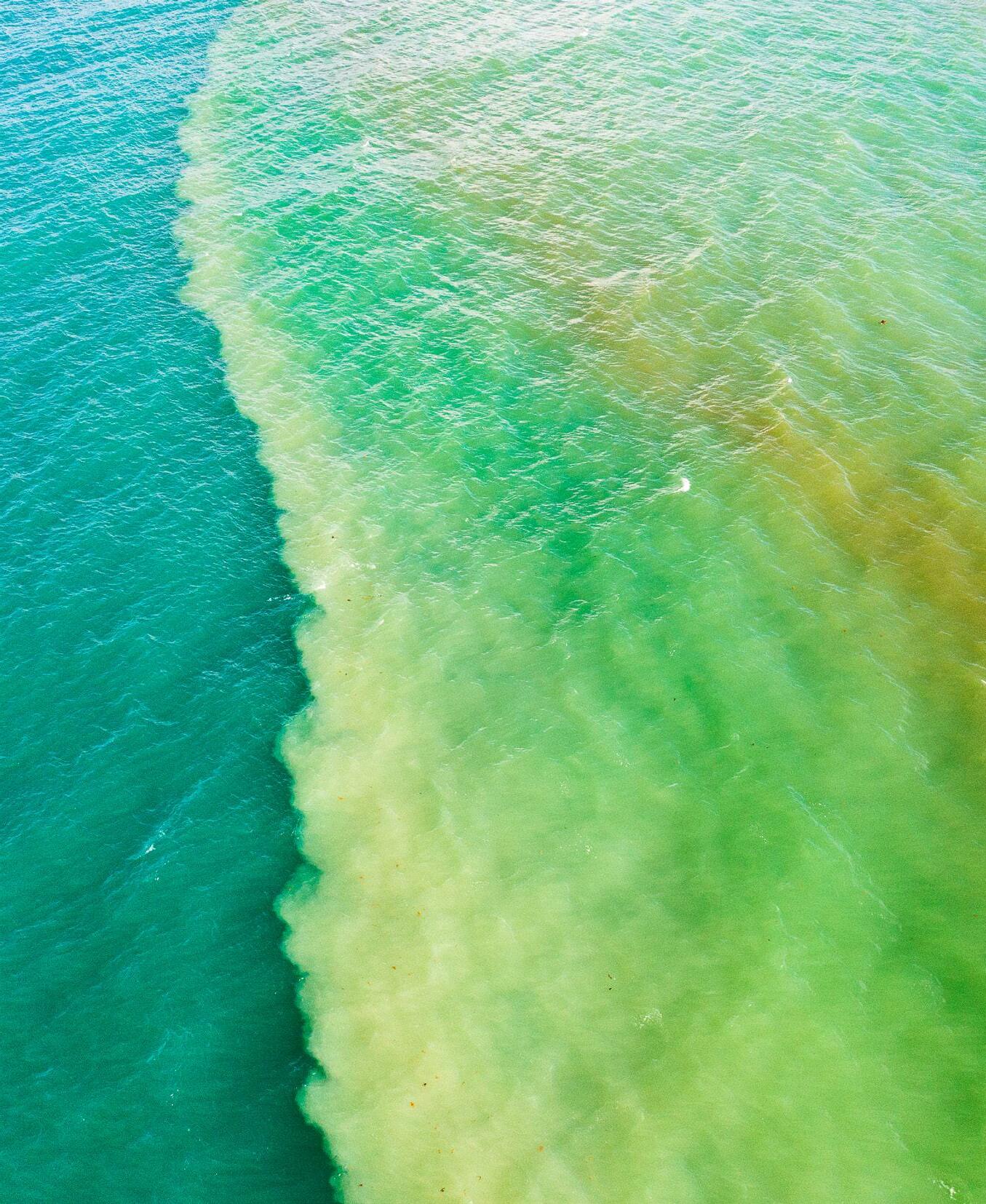
14 minute read
Marking Half a Century
WATERCOLORS PAINTED WITH PRIMARY PRODUCTIVITY
The surface colors of the estuary outflows through a manmade inlet in St. Lucie County paint a beautifully painful picture of the intersection of natural and anthropogenic forces. First, we see the turquoise blue waters of the warm subtropical Atlantic Ocean, with a harsh line discerning the tidal flux of nutrient-packed inshore waters. The nutrients contributing to primary productivity of plankton at the base of the food chain are murked with the runoff of human development. However, streaks of orange and red suggest that life-supporting processes also are occurring in the mix of stratified sediment.
Five Decades of Using Ocean Science to Better the World
BY BETHANY AUGLIERE
In 2021, FAU Harbor Branch Oceanographic Institute turned 50, marking a half-century of groundbreaking research and exploration. From searching for new cancer therapies, to working on cutting-edge aquaculture techniques for global food security, the mission of FAU Harbor Branch is simple: Ocean Science for a Better World® .
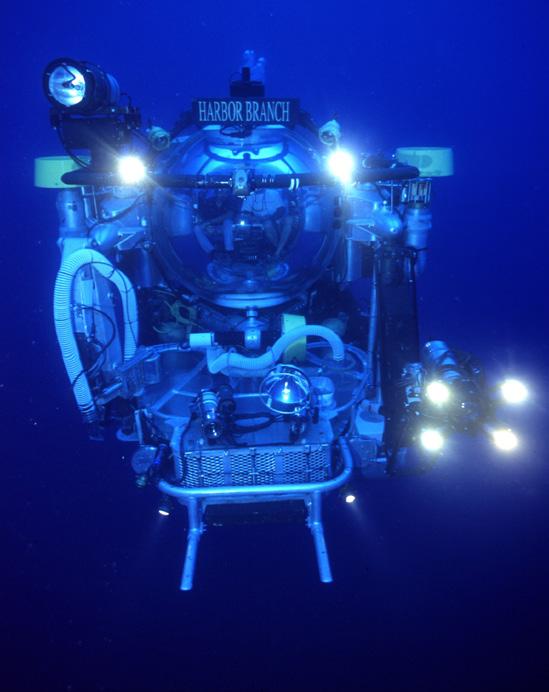
“We want to help the world,” said Jim Sullivan, Ph.D., executive director of FAU Harbor Branch. “More than 70 percent of the world is ocean. Our weather, our food, our very lives are dependent on the ocean.”
During its five decades, Harbor Branch has undergone many changes — transforming from a small independently funded outpost to a critical component of FAU’s research portfolio. Despite the changes, many researchers have worked with Harbor Branch since the beginning, conducting invaluable longterm research spanning decades.
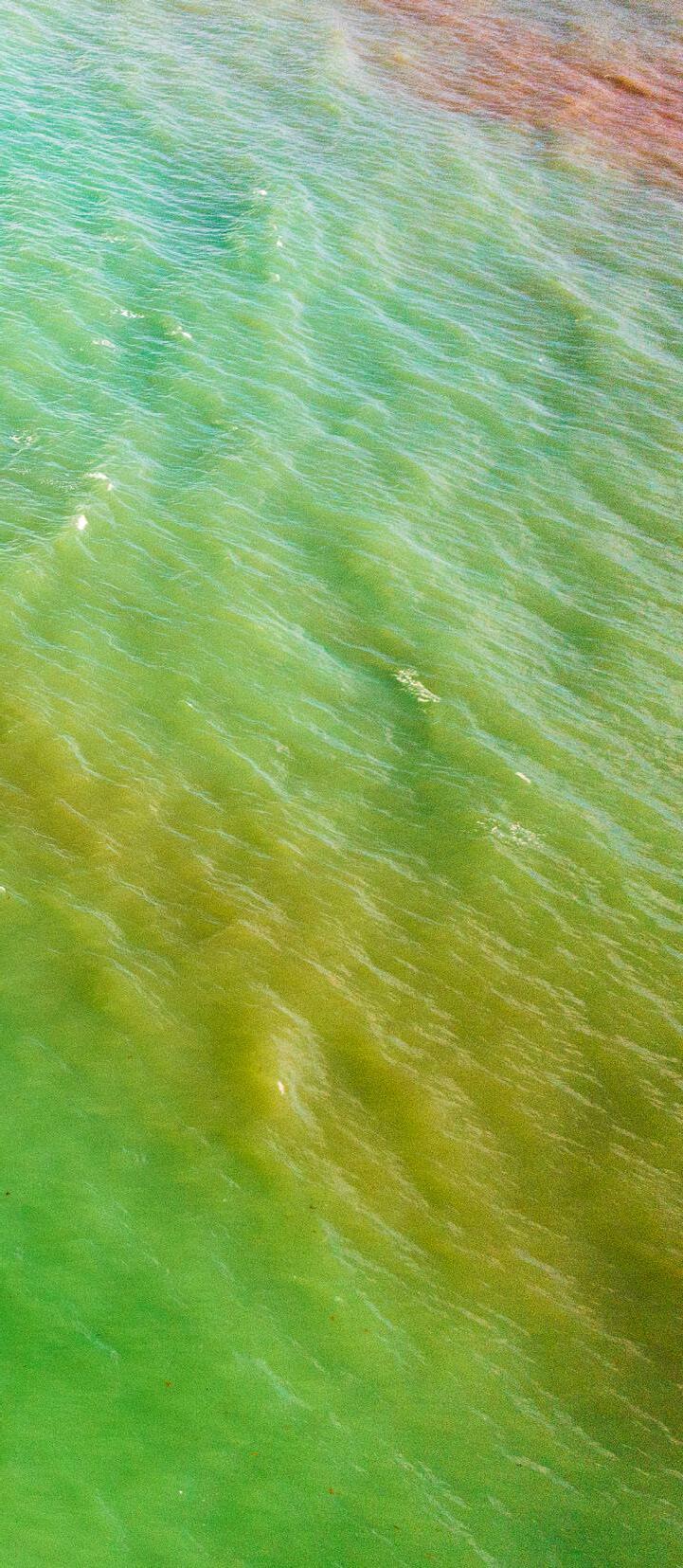
Founded in 1971 as Harbor Branch Oceanographic Institution, the 144-acre campus along the Indian River Lagoon became a part of FAU in 2007 to expand the university’s research, education and outreach efforts. Now, FAU Harbor Branch conducts about one-third of FAU’s research activity, in four key areas: ocean and human health, aquaculture innovation and food security, technological innovation and national defense, and marine ecosystem conservation. It employs more than 200 scientists, engineers, educators, staff and students.
EST. 1971
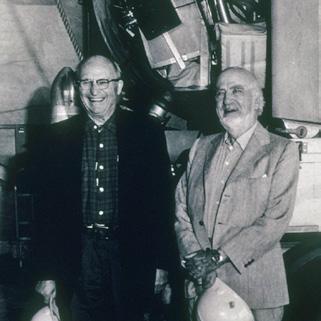
1971 J. Seward Johnson Sr.,
right, and longtime friend Edwin A. Link.
1971 Engineering
Division founded to improve safe ocean exploration and research.
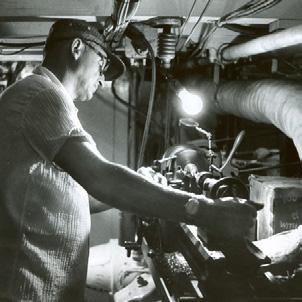
1971 Marine Science
Division founded with focuses on deep-sea biology.
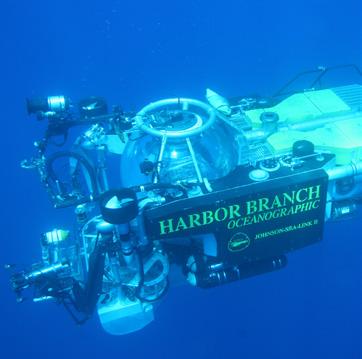
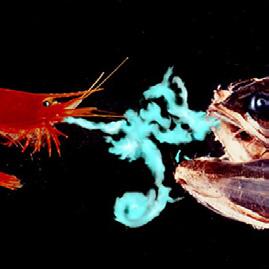
1971 Built in 1971 and 1975, the Johnson Sea-Link Submersibles
revolutionized the field of deep-sea exploration with their large, acrylic spheres which allowed a near-360-degree view of life under the sea. These submersibles were in commission for nearly 40 years, and together conducted more than 9,000 dives worldwide, led by more than 3,000 scientists.
Part of Harbor Branch’s mission includes outreach and education efforts to foster the next generation of ocean stewards, as well as train future scientists through pre-collegiate, collegiate and graduate programs.
Harbor Branch was founded by J. Seward Johnson Sr., heir to the Johnson & Johnson pharmaceuticals fortune, who had a passion for sailing and the ocean. He teamed up with Edwin A. Link, the inventor of the flight simulator, who furthered the founder’s vision with his passion for sea exploration and engineering expertise. The two met while serving on the board for Woods Hole Oceanographic Institution in Massachusetts.
This partnership revolutionized deep-sea exploration, spawning the Johnson Sea-Link submersibles, built in 1971 and 1975. Their large, acrylic spheres allowed scientists a near-360-degree view of life up to 3,600 meters under the sea. Harbor Branch was one of three organizations in the nation, and six in the world, that ran manned deep-sea submersible research vehicles along the ocean floor. Together, the subs were used in more than 9,000 dives around the globe led by more than 3,000 scientists.
These subs helped John Reed, a research professor at FAU Harbor Branch and principal investigator for the institute’s Robertson Coral Reef Research & Conservation Program, discover the deep-water Oculina (ivory tree coral) coral reefs off Florida’s east coast, which exist nowhere else on Earth. That discovery directly resulted in the protection of fragile deepwater coral habitats, including the world’s first marine protected area for deep-sea corals.
“Every time we dived the sub we saw things no one had ever seen before, discovered new reefs, new species, new bioactive compounds,” said Reed, who joined Harbor Branch in 1974. “Every dive was thrilling.”
Now, Reed continues to explore the reefs using advanced technologies thanks to remote sensing and automated underwater vehicles. Just like rainforests, deep-water reefs are biological hotspots, providing critical habitat for marine life. “For 40 years, I’ve been trying to protect these deep-water Oculina reefs,” he said, adding that they may contain organisms that could hold compounds used for treating cancer and other diseases, or could be used to combat antibacterial resistance.
In 1984, Harbor Branch launched the Marine Biomedical and Biotechnology Research (MBBR) Program to collect marine organisms, including deep-sea sponges. Since then, scientists have amassed 30,000 samples of marine life and 19,000 microbial cultures to find possible disease-fighting chemicals, many of which were collected by scientists while diving the submersibles.
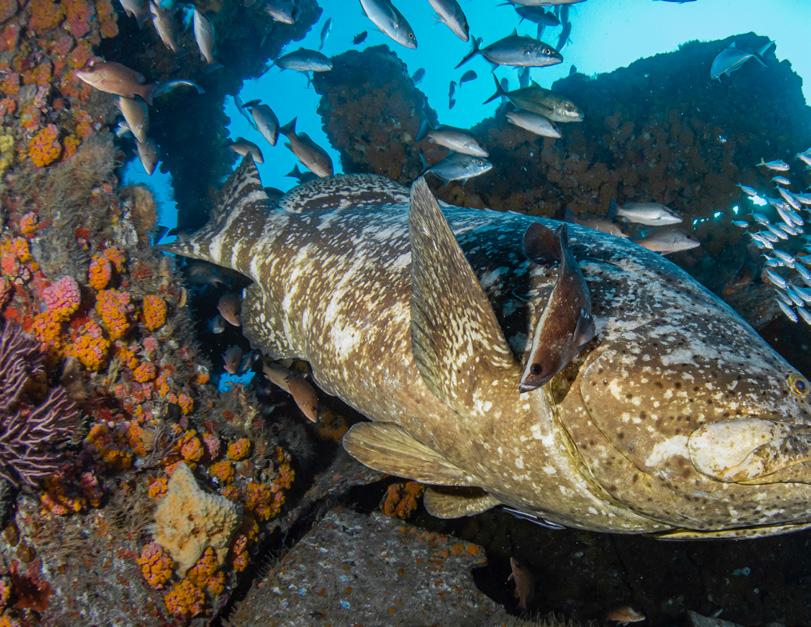
An Atlantic goliath grouper swims on the M/V Castor wreck located in South Florida.
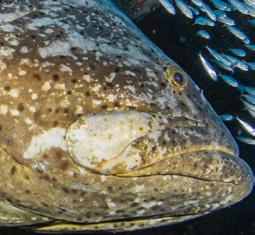
TRACKING GIANTS
Custom Tags to Open World to Goliath Grouper Behavior in the Wild
1973 Beginning of the
Indian River Lagoon Coastal Study, the first major research project.
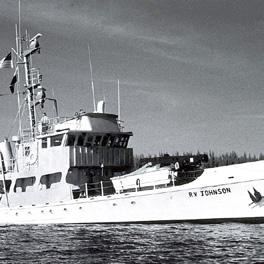
1974 Former Coast Guard cutter
named “R/V Johnson” joins Harbor Branch fleet.
Reaching lengths of up to eight feet and weighing close to 800 pounds, the Atlantic goliath grouper is a top predator at many of Florida’s offshore reefs. While a crucial component of a healthy ocean ecosystem, little was known about the behaviors of these fish in the wild — until now.
Researchers from FAU’s Harbor Branch Oceanographic Institute and College of Engineering and Computer Science are gaining new insights into the underwater behavior of goliath groupers through the development of a novel multi-sensor tag, which includes everything from a three-axis accelerometer — like that found in your smart phone or watch to measure activity — to a video camera and a hydrophone for monitoring underwater sound. The findings were published in the journal Sensors.
The scientists applied the minimally invasive tags to six groupers to record data on movement and activity, and identified 13 behaviors. They applied both machine-learning and deep-learning methods to classify nine of the 13 behaviors. The most common behaviors were hovering, forward swimming and resting. More sporadic behaviors, including vocalizations, were captured and classified as well.
According to Lauran Brewster, Ph.D., first author and senior research fellow in Harbor Branch’s Fisheries Ecology and Conservation Lab, the new customized tags can inform more about the day-to-day activity of goliath groupers and similar species in the wild. They also can show how behavior might differ between habitat types, such as natural versus artificial reefs, or be affected by human activity, like fishing and diving – ultimately helping us make more informed management decisions.
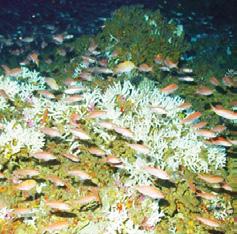
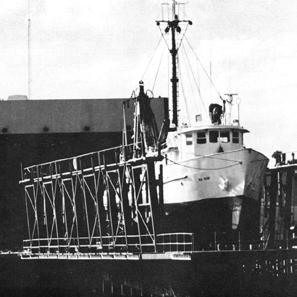
1976 Link
Engineering Laboratory building and Marine Shipping Railway built.
1975 Deep-water
Oculina verrucosa reef discovered off Florida’s east coast.
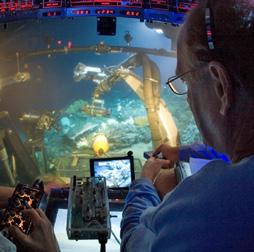
1978 Sampling mechanism “Critter Gitter” installed
on Johnson Sea-Link for collecting organisms.
1984 Marine
Biomedical Program founded to discover medicines from the ocean.
2004 Harbor Branch was hit by two back-to-back
hurricanes—Category 3 Francis and Category 4 Jeanne— causing nearly $60 million in damage. These events led to the restructuring of the institute and the construction of several new, state-of-the-art laboratory buildings.
So far, scientists with the MBBR program have found sponges that show activity against the deadly antibiotic-resistant Staph bacteria (commonly known as MRSA), as well as a lesser-known bacterium that causes problems for people with cystic fibrosis and other diseases, known as Pseudomonas aeruginosa. One compound, discodermolide, is a natural product from a Caribbean sponge that attacks cancer cells and has made it to a phase 1 clinical trial. Researchers also have discovered compounds from sponges that selectively target triple-negative breast cancer cells when grown as small tumors in the lab.
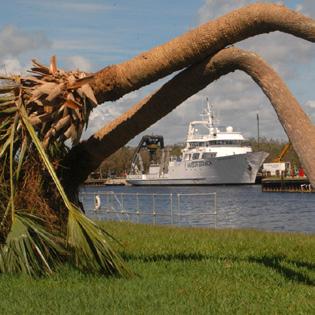
Sponge expert Shirley Pomponi, Ph.D., a research professor in the MBBR program, was recruited in 1984 to help identify specimens in the collection. She has worked for FAU Harbor Branch for more than 35 years. “I have been part of a team that has discovered marinederived chemicals that will benefit human health, and that’s been most fulfilling,” she said.
Many of the researchers and staff have stayed at FAU Harbor Branch because of the opportunities and collaborative nature of the institute. Brian Lapointe, Ph.D., has published groundbreaking papers due to long-term data collection. Most recently, with 30 years of unique data from Looe Key Reef in the lower Florida Keys, he determined that the problem of coral bleaching is not just due to a warming planet, but also because of excess nitrogen in the water. “Working at FAU Harbor Branch has afforded me the opportunity to do really unique, long-term research,” Lapointe said.
A PHARMACY IN THE SEA
FAU Scientists Culture Marine Sponges in 3D for Human Health Applications
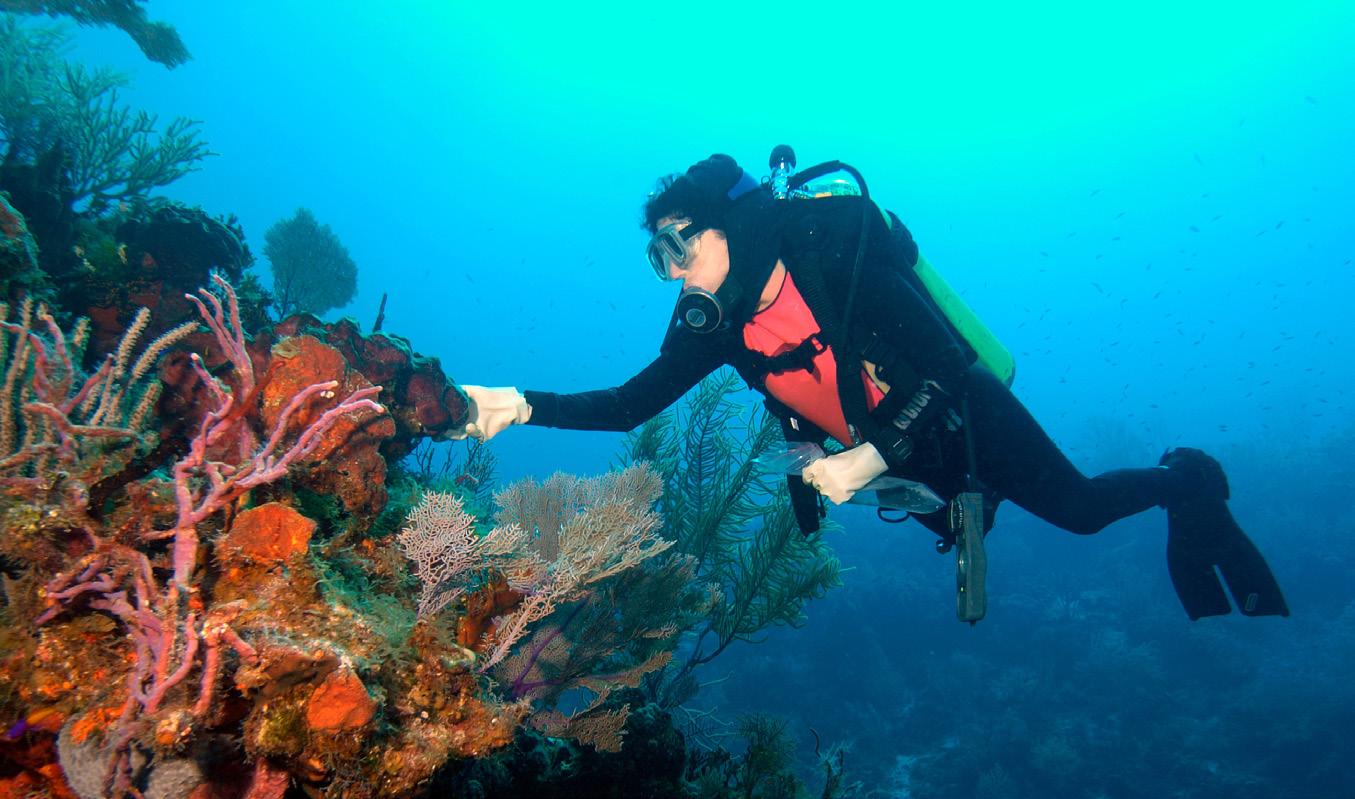
The institute’s first postdoctoral researcher was Dennis Hanisak, Ph.D., who started in 1977. He is now a research professor and director of the Indian River Lagoon Observatory, specializing in marine plants, like seagrasses and seaweeds.
Like Lapointe, Hanisak has seen the natural world change before his eyes faster than he ever thought possible. He too worked on the Florida reef and “it died before my eyes,” he said. Throughout Hanisak’s career, he has seen new fields emerge that weren’t around when he started, like restoration ecology and conservation biology to address threats due to human activity.
The work of scientists like Lapointe and others is critical for marine ecosystem conservation. Results from their studies help inform policy makers as they develop sound conservation, management and restoration strategies to protect and save our oceans.
“Now more than ever, there is a critical need to understand the ocean, and how to best manage this complex ecosystem for the benefit of society,” Sullivan said. “FAU Harbor Branch was founded in the spirit of ocean exploration to unveil the mysteries of the deep. To this day, the institute relentlessly pursues innovative ocean research, while providing top-tier educational programs that will lead us to solve the most pressing issues facing our oceans.” v

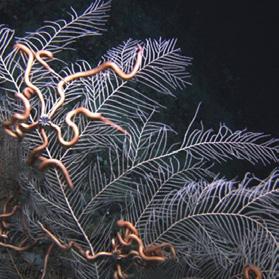
2004 Eye-in-the-Sea
created to document behaviors of deep-sea animals.
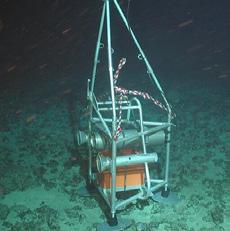
2010 FAU Harbor
Branch assesses the impact of the Deepwater Horizon Oil Spill.
2014 FAU Harbor Branch
Oceanographic Institute builds world’s first ocean energy turbines for offshore testing.
In 2019, Shirley Pomponi, Ph.D., accomplished a 30-year goal: creating the first cell line from marine sponges. She and her students have now taken that work one step further and cultured those cells in 3D, paving the way for new human therapeutics and sponge conservation.
More than 9,000 species of marine sponges exist worldwide, many of which contain promising chemical agents that may be useful in treating diseases such as cancer, COVID-19 and antibiotic-resistant Staphylococcus bacteria. But those pharmaceutically relevant natural products aren’t found in enough quantities to be economically or ecologically feasible to develop a drug. That’s part of the reason why Pomponi wanted to establish a sponge cell line.
“We are applying this technology to scale up production of spongederived chemicals with human health applications, and to establish a nursery of sponges that can be used to restock habitats in which the sponges have been killed due to extreme weather events, harmful algal blooms or impacts of climate change,” Pomponi said.
Growing the cells in 3D means they behave more like they would in a normal intact sponge, said Pomponi, senior author of the new study published in the journal Marine Drugs. Pomponi’s group chose the marine sponge Geodia neptuni for this study to demonstrate proof-of-concept of the 3D culture method.
Finding a gelatin medium to grow the sponge cells wasn’t without its challenges, she said. Marine sponges grow in salinities that are about three times greater than mammalian cells. Many of the off-the-shelf 3D substrates — called matrices — are developed for the culture of mammalian cells and will not solidify at the higher salinity. First author of the paper, Elizabeth UrbanGedamke, one of Pomponi’s former graduate students and now research technician, had to modify how she made the gelatin, which was instrumental in the progress of the research.
Once it worked, “I wasn’t surprised, but I was happy,” she said. “I knew that once we got the cells to divide, it was just an issue of selecting the most appropriate 3D matrix.”
For lifelong work like this, Pomponi has one message: “Do not give up, especially if you’re making incremental improvements, and surround yourself with students and staff who think out of the box and will propose different approaches.”
A manatee enters Fanning Springs on Florida’s west coast to escape the cooler ocean and river waters during a cold snap.
SAVING STARVING MANATEES
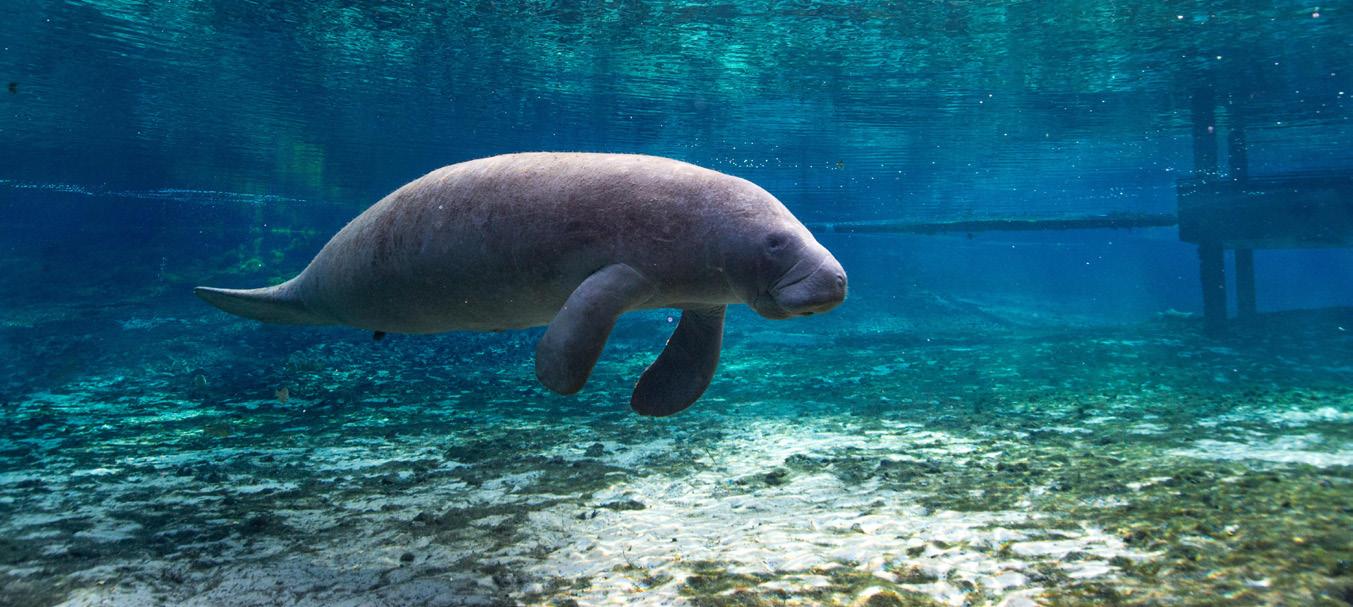
Researchers Answer Sea Cows’ SOS
One of Florida’s most iconic marine mammals — the manatee — is in trouble. These gentle giants are starving. But FAU scientists are doing their part to help the manatees and their habitats.
In 2021, more than 1,000 manatees died in the state, mostly from starvation. This is nearly double the five-year average, according to a report from the Florida Fish and Wildlife Conservation Commission (FWC). The number of deaths is so unprecedented that the U.S. Fish and Wildlife Service (FWS) has classified the surge in deaths as an unusual mortality event, meaning that the issue demands immediate response.
Manatees inhabit the shallow rivers, bays, canals, estuaries and coastal areas of Florida, with seagrass an important part of their diet, along with other submerged aquatic vegetation. They can eat up to 15 percent of their body weight a day. A 1,000-pound manatee, for example, might eat 100 to 150 pounds of seagrass daily.
Poor water quality leading to harmful algal blooms has led to widespread seagrass die-offs, including in the Indian River Lagoon (IRL), a 156-mile-long estuary along the state’s east coast. FAU Harbor Branch Oceanographic Institute researcher Dennis Hanisak, Ph.D., is investigating the cause of this seagrass loss and contributing to important restoration efforts in the lagoon. He has more than 30 years of experience studying marine plants.
In a study published in Frontiers in Marine Science, Hanisak and his co-authors found that about 7,400 acres of seagrass were lost between 1943 and 1994. Another 58 percent was lost between 2011 and 2019. The loss was due to harmful algal blooms blocking out the available light for the plants to grow, Hanisak said.
To help with recovery efforts, Hanisak and his team are experimenting growing seagrass in large tanks and then transplanting it into the IRL. This seagrass nursery technology project recently received a grant from Florida Power & Light (FPL) through its charitable arm, the NextEra Energy Foundation Inc. The FWC is funding the expansion of the seagrass nursery while FPL is providing the funding to operate the nursery for at least three years.
While Hanisak grows seagrass to help the ecosystem, the manatees need help now. Although it’s illegal to feed manatees under regular circumstances, FWS and FWC began an experimental effort to supplement the malnourished mammals’ diets with lettuce and cabbage, according to FWC officials. The experimental feeding began in January in the warmer waters discharged from an FPL power plant near Cape Canaveral. During the winter months, manatees travel from the coast to warmer waters around the state, including the outflow from power plants.
In addition to supplementing the manatees with food, a multi-agency research effort is underway to study their body condition, and find and rescue critically ill manatees, using drones. The FAU HBOI Stranding and Population Assessment team, led by Steve Burton, will assist with this project by flying drones at the Harbor Branch basin and other locations where manatees gather.
“Our team members, Lydia Moreland, Brooke Davis and Shanen Cox, are Federal Aviation Administration certified drone pilots, and they will be flying weekly as needed, to collect video footage which will be submitted to the permit holders of the project for review,” Burton said. “Our team is honored to be participating in this research to understand more about this threatened marine mammal and their health during this trying time.”
Note of Collaborators
“The collaboration amongst a group of organizations, including Save the Manatee Club, University of Florida, Mote Marine Laboratory, Clearwater Marine Aquarium, Blue World Research Institute, New College of Florida, Hubbs-SeaWorld Research Institute, Florida International University, and more, allows for quality data collection and extensive geographic coverage,” Steve Burton said.






